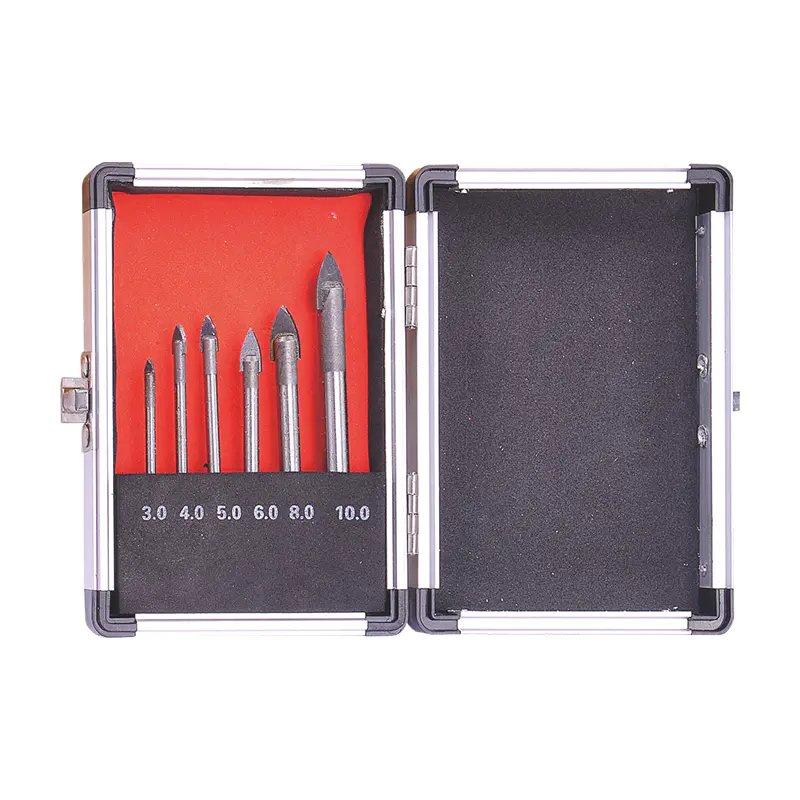2025-06-20
When working with glass materials, drilling requires careful attention to the tools and techniques employed. A common question among users is whether using a Glass Drill Bit at high rotational speeds can damage the glass being drilled. Glass, being brittle and sensitive to heat and mechanical stress, demands a balanced approach to drilling. This article explores the effects of high-speed drilling on glass and guides how to prevent damage during the process.

Glass is a fragile material that does not tolerate excessive mechanical or thermal stress well. When a Glass Drill Bit operates at very high speeds, friction between the bit and the glass surface increases dramatically. This friction generates heat, which can cause localized thermal expansion and stress within the glass. Since glass has low thermal conductivity, the heat tends to concentrate around the drilling site, increasing the risk of cracking or shattering.
Apart from heat, high rotational speeds also affect the mechanical forces applied to the glass. Rapid spinning can produce vibrations and uneven pressure, which may result in micro-cracks or chips forming near the drilled hole. These small damages can quickly propagate and cause larger fractures, ruining the glass piece.
The material and design of the Glass Drill Bit influence how well it can handle high speeds without damaging the glass. Bits made from tungsten carbide or coated with diamond grit are more durable and can cut more efficiently, reducing friction and heat buildup. However, even bits require controlled speeds to prevent damage.
Controlling drilling speed is critical. While it might seem that higher speeds would improve efficiency, in glass drilling, this is often not the case. Moderate speeds allow the bit to cut cleanly without excessive heat generation. Most experts recommend using lower to medium speeds, especially when drilling thicker or tempered glass. Using a speed too high for the material and bit can increase the risk of cracking.
Cooling during drilling is essential to mitigate heat-related damage. Applying water or another coolant continuously helps dissipate the heat produced by friction. This cooling effect not only protects the glass but also prolongs the life of the drill bit. Without sufficient cooling, even moderate speeds can cause thermal stress, causing glass damage.
Proper technique also helps prevent damage when drilling glass at any speed. Holding the glass securely on a flat surface reduces vibrations and helps maintain even pressure. Starting with a small pilot hole or a shallow indentation guides the bit and reduces slipping, which can cause chips and cracks. Drilling slowly and steadily, with occasional pauses to allow cooling, ensures good results.
In conclusion, using a Glass Drill Bit at very high rotational speeds significantly increases the risk of damaging fragile glass. The combination of heat buildup and mechanical stress caused by excessive speed can cause cracks, chips, or shattering. To protect the glass, it is important to use moderate speeds, apply continuous cooling, and maintain proper drilling technique. Understanding these factors allows for safer, more effective glass drilling, preserving both the material and the tool.